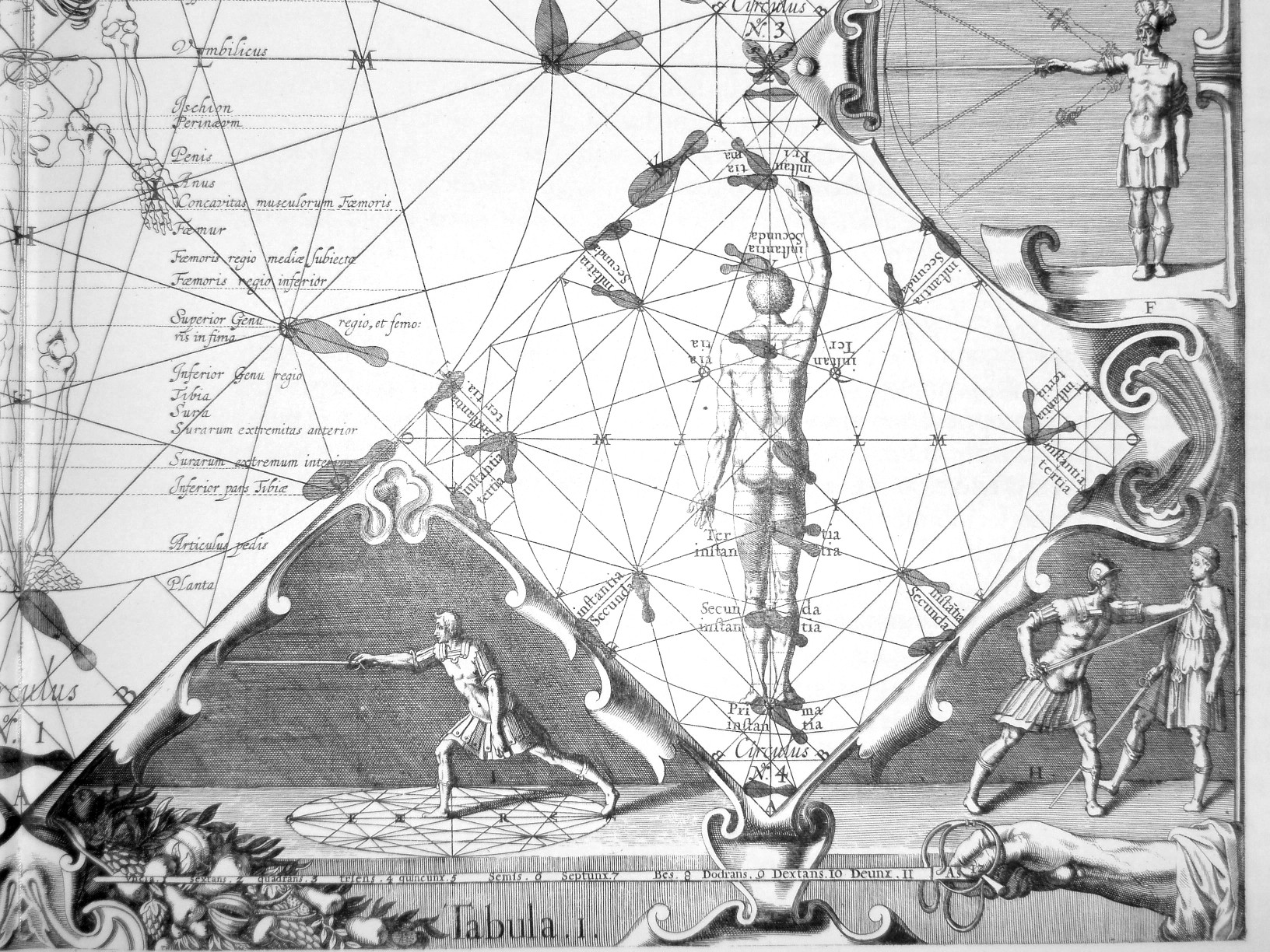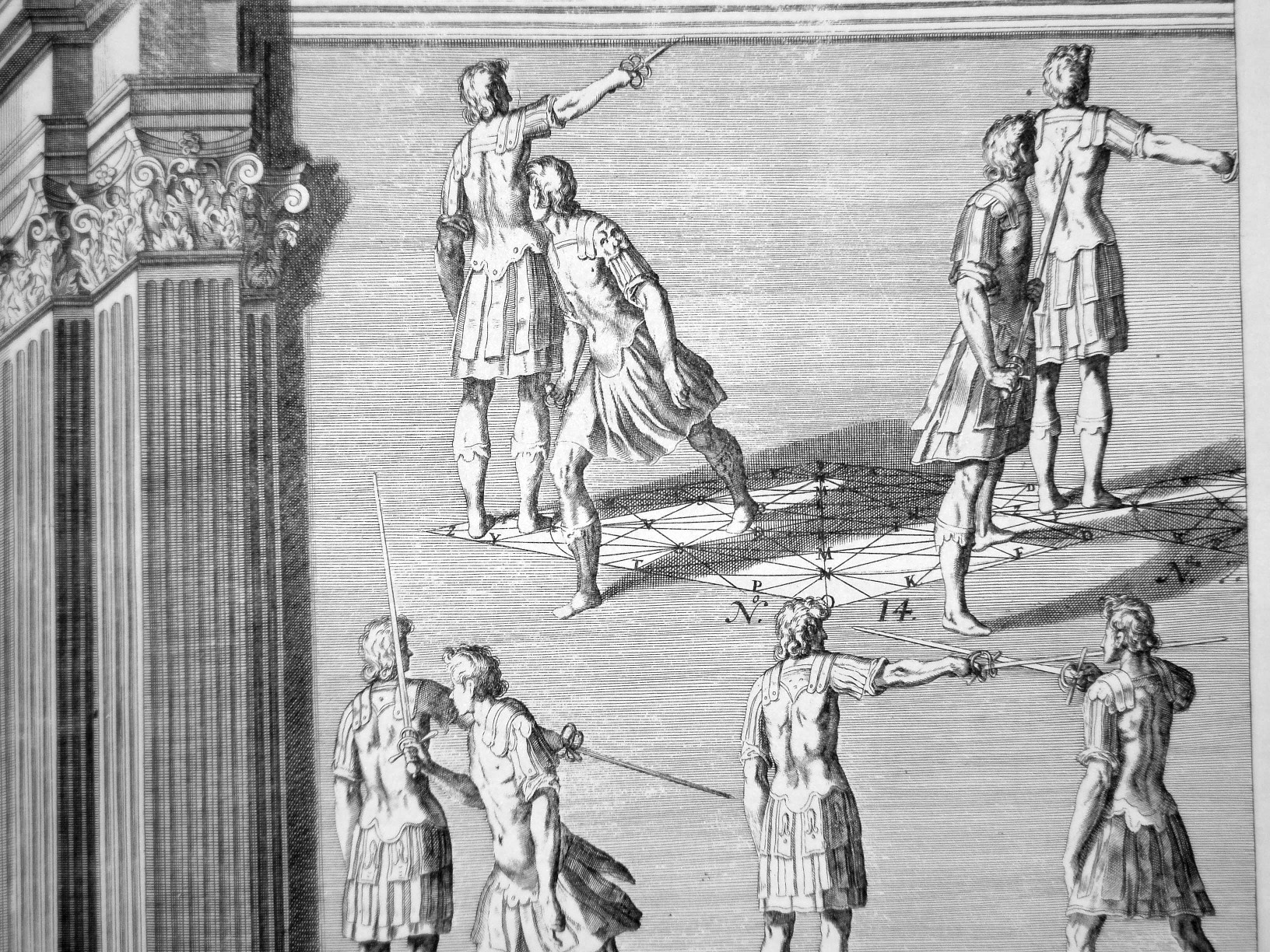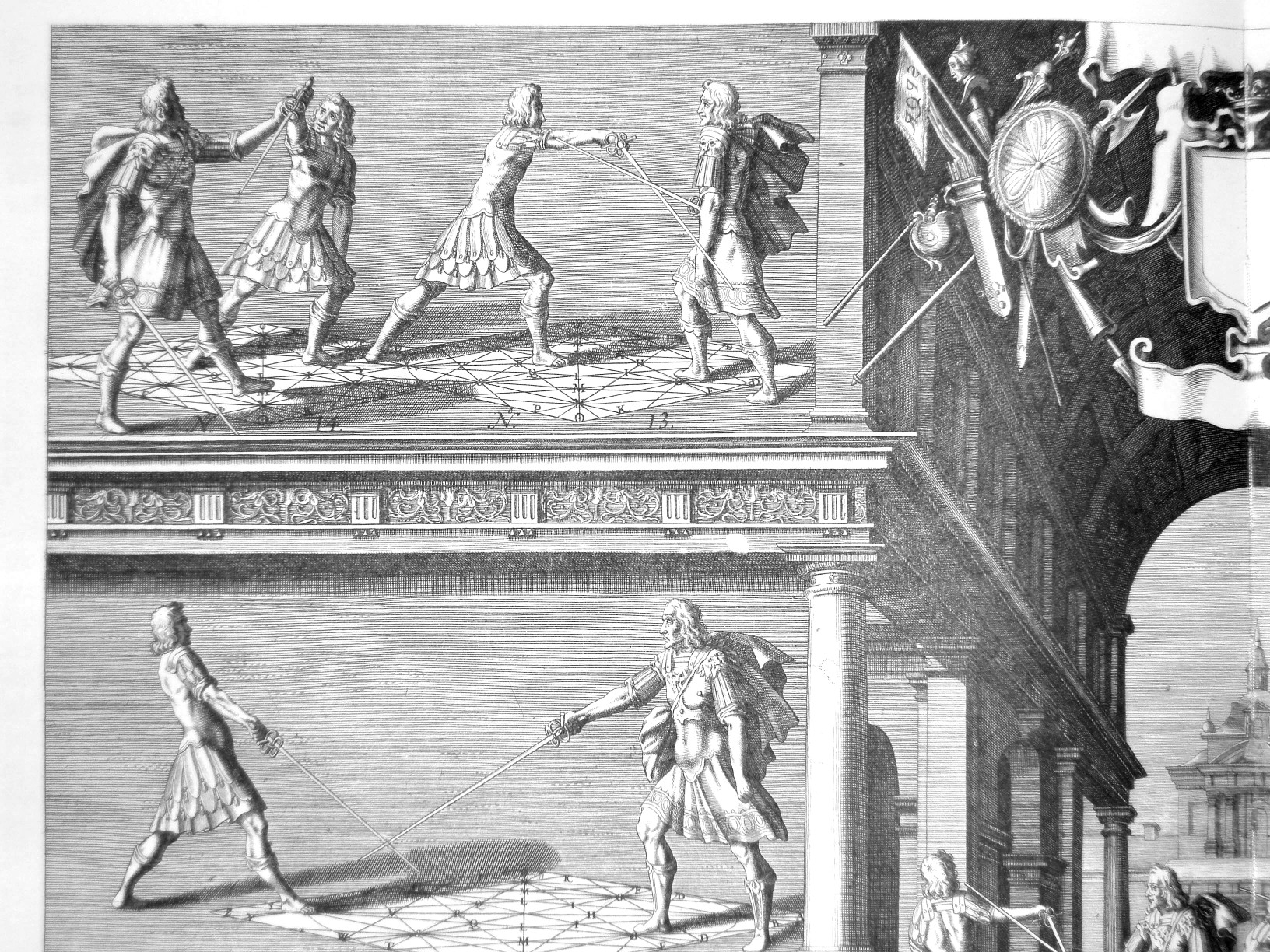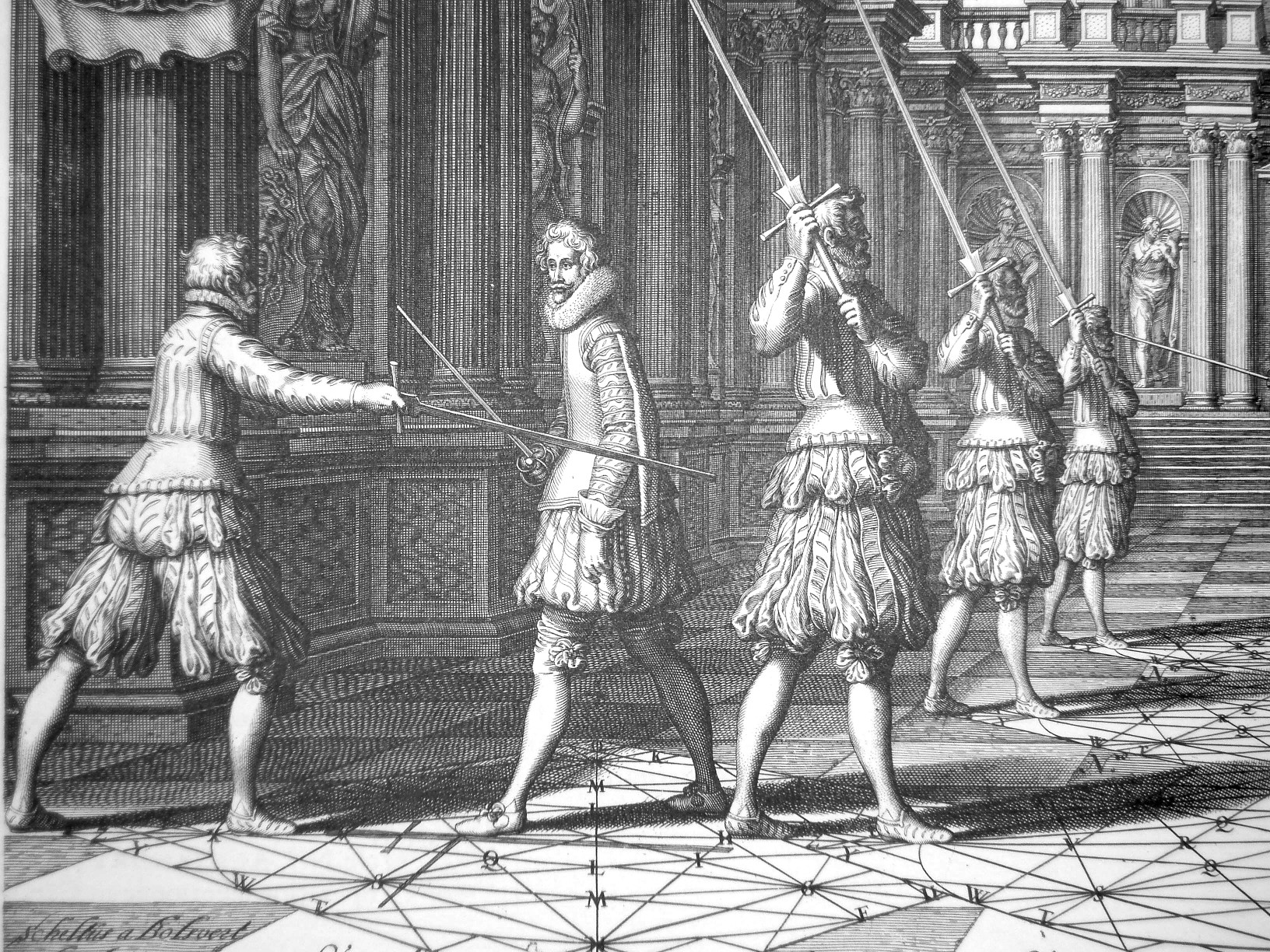Girard Thibault’s Académie de l’Espée, finished in 1628, is a very interesting fencing book which contains some of the most thorough descriptions of fencing moves together with very detailed and consistent illustrations. High-res scans of the books are available here. However, that incredible detail is also a huge barrier for its study. It is difficult to hold it all together in your mind, and when you seek advice for a specific situation it can be hard to locate it again, even if you have seen it before!
One of the first useful work I’ve done when I got my facsimile has been to run through the book and take quick notes of what was where. It is this rough plan that I want to publish here, hoping it might be useful to others. It is of course extremely terse and perhaps inaccurate at times, except for the first few tables that I had read in a bit more detail, but it allows one to look up what is where and maybe find specific answers if need be. I might expand that rough plan in the future to include each sequence of circles…
Book one
This book exclusively deals with a right-handed opponent armed with a single sword.
- Discourse on the measure of Man (p.1-4)
- Construction of the Circle (p.5-6)
- Naming of points and lines (p.7)
- Properties of the Circle: walking, instances, times, lengths, degrees of strength, gripping the sword
- Link with Dürer’s canonical proportions
- Dimensions of the hilt
- Dimensions of the baldric
- Drawing the sword
- How to set yourself in the straight line posture (continued in next table)
- How to set yourself against the straight line or the obtuse angle
- Discourse on the excellence of the straight line
- How to adapt according to the length of blades or steps
- Subjection to 2nd instance on the inside (circles 1-2)
- Thrust from 3rd instance (circle 3)
- Response to a parry of average weight (circles 4-7)
- Response to a parry of strong weight (circles 8-13)
- Discourse on the weights and feeling
- Dealing with reactions of various weights during the subjection
- Subjection to the inside from the obligation to the outside
- Discourse on postures and the rigidity of illustrations
- First intention strikes
- Discourse on strength and weaknesses of the opponent’s posture
Book two
This book details specific cases against different weapon combinations. I have used German names for the postures of the greatsword here, although Thibault does not use that vocabulary and the postures are variants that do not necessarily appear in German works as far as I know. These names should be viewed as shorthands rather than as perfect descriptions.
- Action derived from book one, table XXIX, circle 8
- Action derived from book one, table XXIV, circle 1
- Subjection
- First-intention strikes
- Adapting to various postures
- More on subjection
- Other postures, striking between the weapons
- Void against the same cut
- Subjection against “longpoint”
- Countering a cut from “zornhut”
- Attacking against “ochs” and “hengetort”









Thanks so much for this! That book is basically incomprehensible to a beginner without it XD
Muchas gracias por este y sus otros trabajos sobre Thibault que,desde hace tiempo sigo atentamente.